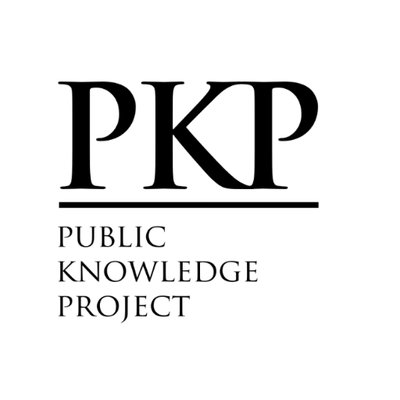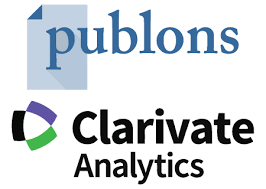Les déterminants de l'inflation dans la zone CEMAC
le rôle de la finance informelle
DOI :
https://doi.org/10.59051/joaf.v14i1.632Mots-clés :
Mots-clés : inflation, finance informelle, monnaie fiduciaire, spread d’intérêt, CEMAC.Résumé
Objectif : Cet article a pour objectif d’identifier les déterminants de l’inflation dans les pays de la Communauté Economique et Monétaire de l’Afrique Centrale (CEMAC) en s’intéressant au rôle de la finance informelle.
Méthodologie : Nous recourons à une modélisation en panel en utilisant l’estimateur PMG sur la période 2000-2020.
Résultat : Les résultats montrent que la finance informelle exerce une influence négative sur l’inflation à long terme et non à court terme dans les pays de la CEMAC. Il importe de prendre en compte un tel secteur afin de statuer sur l’opportunité de l’intégrer dans les stratégies de la BEAC pour maintenir la stabilité des prix dans la CEMAC.
Originalité de l’article : L’originalité de l’article réside dans la proposition d’un indicateur qui permet de mesurer la liquidité du secteur informel et de vérifier ses effets sur l’inflation dans les pays membres de la CEMAC.
Téléchargements
Références
Akpo, P E J, (1999), « Finance informelle et politique monétaire, chapitre 11 », Finance Informelle et financement du développement, Université Francophone.
Andersson, Fredrik NG (2011), « Monetary Policy, Asset Price Inflation and Consumer Price Inflation », Economics Bulletin, Vol. 31 no.1 pp. 759-770.
Assenmacher-Wesche, K. et Gerlach, S, (2006), « Interpreting Euro Area Inflation at High and Low Frequencies » : BIS Working Paper N°195, BIS.
Barnichon, R. et Peiris, S, (2007), « Sources of inflation in sub-Saharian Africa » : Journal of African Economies.
Bikai, J, Batoumen, H, Fossouo, L, (2016), « Déterminants de l’inflation dans la CEMAC : le rôle de la monnaie », BEAC Working Paper Novembre 2016.
Blanchard, O. et D. Cohen (2013), « Macroéconomie », 6ième Edition, Pearson.
Borio, C. E. V, and A. Filardo, (2007), « Globalisation and inflation: New cross-country evidenceon the global determinants of domestic inflation ». BIS Working Papers 227, Bank for International Settlements.
Caceres, C., Poplawski-Ribeiro, M.andTartari, D. (2013), « Inflation Dynamics in the CEMAC Region » : Journal of African Economies, 22 (2), p. pp. 239–275.
Calvo, G. A, (1983), « Staggered Contracts in a Utility-Maximizing Framework », Journal of Monetary Economics 12 (September), 383-398.
Cavalcanti, T.V. de V., and Villamil, A.P, (2003), « Optimal inflation tax and structural reform ».
Chaudhuri,S and Gupta, M, R, (1997), « Formal credit, corruption and the informal credit market in agriculture ; A theoretical analysis. Economica, New Series, Vol.64, No. 254 (May, 1997), 331-343.
Chockri A. and Frihka I, (2011), « La portée de la politique de ciblage d’inflation : approche analytique et empirique pour le cas tunisien », PANOECONOMICUS, 2011, PP-91-111.
Chow, G. C. et A.-L. Lin, (1971), « Best linear unbiased interpolation, distribution, and extrapolation of time series by related series ». The Review of Economics and Statistics 53(4), November, 372–375.
Comunale, M. and D. Kunovac, (2017), « Exchange rate pass-through in the euro area », Working Paper Series 2003, European Central Bank.
Conti, A. M., S. Neri, and A. Nobili (2017), « Low inflation and monetary policy in the euro area », Working Paper Series 2005, European Central Bank.
Diaw, A. et A. K. Sall, (2012), « Les déterminants de l’inflation dans les pays de l’union économique et monétaire ouest africaine (UEMOA) : une approche en données de panel », Revue Economie et Gestion, Vol. 11, No. 1-2, p. 85-110, Jan-Juin.
Friedman, M, (1968), « The Role of Monetary Policy », The American Economic Review, Vol. 58, No. 1 (Mar.), pp. 1-17.
Ftiti, Z, (2010), « The macroeconomic performance of the inflation targeting policy : anapproach base on the evolutionary co-spectral analysis », Economic Modelling, 27, 1, 468-476.
Gerdesmeier D., H-E. Reimers and B. Roffia, (2009) « Asset Price Misalignments and the Role of Money and Credit », European Central Bank Working Paper 1068.
Globan, T., V. Arcabic, and P. Soric (2016), « Inflation in New EU Member States: A Domestically or Externally Driven Phenomenon ? », Emerging Markets Finance and Trade 52(1), 154–168.
Ghosh, S and Kumar, R, (2014), « Monetary policy and informal finance: Is there a pecking order ? » Reserve Bank of India, December 2014.
Gouteron, S. and Szpiro, D, (2005), « Excès de liquidité monétaire et prix des actifs », Banque de France, note d’études et de recherche, 131.
Hossain A, (2005), « The sources and dynamics of inflation in Indonesia : an ECM model estimation for 1952-2002 », Applied Econometrics and International Development. AEID.Vol. 5-4.
Hugon, P, (1991), « Politique d'ajustement et systèmes financiers informels africains », in J. Adda et A. Assidon (éds), Dette et financement du développement, L'Harmattan, Paris, 1991, pp. 89-112.
Hua,X, Huang, Y, and Wang, X, (2010), « What determine China’s inflation », China Center for Economic Research. Working Paper Series.
Jackson, J., McIver, R.andBajada, C (2007), « Economic Principles ». 2 nd ed. Australia : McGraw-Hill Australia Pty Limited.
Kenkouo, G.-A, (2015), « Dynamique du prix du pétrole et inflation dans la CEMAC » : BEAC Working Paper N°8/2015.
Le Bihan, (2009), « 1958-2008, avatars et enjeux de la courbe de Phillips », Banque de France, Direction des Études Microéconomiques et Structurelles.
Lelart, M, (2006), « De la finance informelle à la microfinance ». AUF et Editions des Archives Contemporaines, 2006.
Levieuge, G (2005), « Politique monétaire et prix d'actifs », Revue de l'OFCE 2005/2(n°93), p. 317-355.
Levin A., Lin C-F., and Chu C-S.J (2002), « Unit root tests in Panel data:asymptotic and finite-sample property », Journal of Econometrics Vol. 108 (n°1): p. 1-24.
Lougani, P. et Swagel, P, (2001), « Sources of Inflation in Developing Countries » : IMF Working Paper N°WP 01/198.
Lucas R. E. Jr, (1972), « Expectations and the neutrality of Money », Journal of economic Theory, No.4, p.103-124.
Lucas R. E. Jr, (1976), « Econometric Policy Evaluation : A Critique », in Studies in Business Cycle Theory, p.104-130.
Madestam, A, (2009), « Informal Finance: A Theory of Moneylenders », Working Paper n. 347.
Mazhar, U. and Méon, P.-G, (2017), « Taxing the unobservable: The impact of the shadow economy on inflation and taxation ». World Development, 90:89–103.
Nicolini, J. P, (1998), « Tax evasion and the optimal inflation tax ». Journal of Development Economics, 55(1), 215–232.
Nguyen, A., Dridi, J., Unsal, F. D, and Williams, O. H. (2015), « On the Drivers of Inflation in Sub-Saharan Africa », IMF Working Paper N°WP/15/189.
Petroni P, (1999), « Critical Values for Cointegration Tests in Heterogeneous Panels with Multiple Regressors », Oxford Bulletin of Economic and Statistics Vol. 61 (n°S1): p. 653-670.
Pedroni P, (2003), « Panel cointegration. Asymptotic and .nite sample properties of pooled time series tests with an application to the PPP hypothesis », Econometric Theory.
Phelps E. S, (1968), « Money-Wage Dynamics and Labor Market Equilibrium », Journal of Political Economy, 76, 4, pp. 687-711.
Phillips A. W, (1958), « The Relation between Unemployment and the Rate of Change of MoneyWage Rates in the United Kingdom », Economica, 25, pp. 283-299.
Ramayah, M, and Teoh, E., (2016), « The Determinants of Inflation: An ASEAN Perspective. Taylor’s Business Review, A Contemporary Business Journal. ISSN: 2232-0172, Vol 6, August 2016 pp. 49-72.
Sall, A K, (2016), « Les perspectives de ciblage de l’inflation dans les pays de l’Union Economique et Monétaire Ouest Africaine (UEMOA) », thèse de doctorat, Economies et finances. Université d’Orléans ; Université de Saint-Louis (Sénégal), 2016.
Samuelson P.A, et Solow R.M, (1960), « Analytical Aspects of Anti-Inflation Policy », American Economic Review 50, n° 2, pp. 177-94.
Sapir, J, (2012), « Inflation monétaire ou inflation structurelle ? », FMSH-WP-2012-14. 2012. .
Sloman J., Wride A. and Garratt D, (2012), « Economics », 8th edition. Essex : Pearson.
Téléchargements
Publié-e
Comment citer
Numéro
Rubrique
Licence
(c) Tous droits réservés richelmy etendino nkombe 2023

Cette œuvre est sous licence Creative Commons Attribution - Pas d'Utilisation Commerciale - Pas de Modification 4.0 International.
Les auteurs qui publient dans cette revue acceptent les termes suivants :
- Les auteurs conservent le droit d'auteur et accordent à la revue le droit de première publication, l'ouvrage étant alors disponible simultanément, sous la licence Licence d’attribution Creative Commons permettant à d'autres de partager l'ouvrage tout en en reconnaissant la paternité et la publication initiale dans cette revue.
- Les auteurs peuvent conclure des ententes contractuelles additionnelles et séparées pour la diffusion non exclusive de la version imprimée de l'ouvrage par la revue (par ex., le dépôt institutionnel ou la publication dans un livre), accompagné d'une mention reconnaissant sa publication initiale dans cette revue.
- Les auteurs ont le droit et sont encouragés à publier leur ouvrage en ligne (par ex., dans un dépôt institutionnel ou sur le site Web d'une institution) avant et pendant le processus de soumission, car cela peut mener à des échanges fructueux ainsi qu'à un nombre plus important, plus rapidement, de références à l’ouvrage publié (Voir The Effect of Open Access).






















